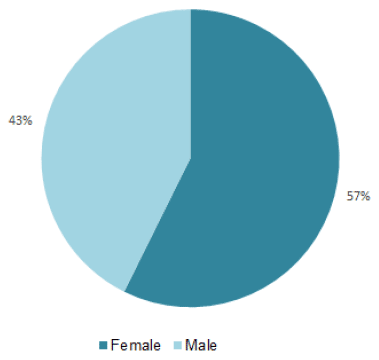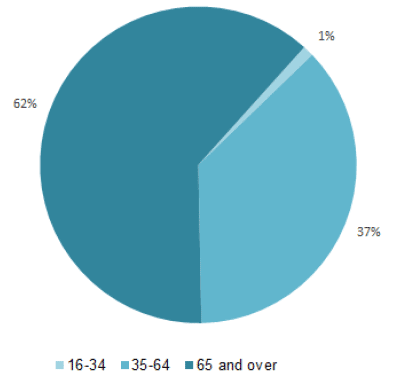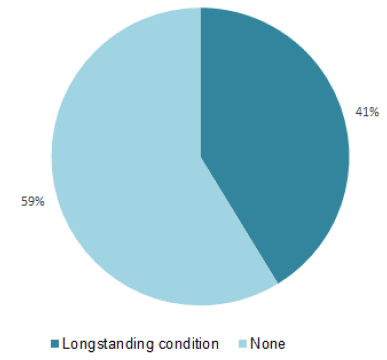Scottish Radiotherapy Patient Experience Survey 2014: National Results: Volume 1
National results from the first Scottish Radiotherapy Patient Experience Survey 2014.
2 INTRODUCTION
2.1 The first Scottish Radiotherapy Survey 2014 took place between February and July 2014. It was administered through all five Scottish radiotherapy centres, with staff handing it out to patients who had undergone their final radiotherapy treatment. Patients only received one copy of the questionnaire and no reminders were issued.
2.2 The survey asks about people's experiences of: consent, information received before radiotherapy treatment, website information, radiotherapy treatment, information given about support, information following treatment and overall radiotherapy care.
2.3 The survey was based on the English Radiotherapy Survey which took place during 2012 with some minor amendments to the questions. This has enabled some high level comparisons between the English survey results and the Scottish survey results.
2.4 This report presents the detailed national findings from the survey. Results for each of the radiotherapy centres are available at: http://www.scotland.gov.uk/Topics/Statistics/Browse/Health/RadiotherapySurvey
Aims of the Scottish Radiotherapy Survey 2014
2.5 The survey's specific aims are:
- To provide radiotherapy centres with feedback on the experiences of their patients, relative to other radiotherapy centres in Scotland in order to inform local improvements.
- To provide national results for the survey to inform improvements for national policy.
- To highlight areas of best practice and areas for improvement.
- To provide a benchmark with the results of the English survey.
Survey design
2.6 The Scottish Radiotherapy Survey was based on the English version of the survey which was carried out in 2013 which enabled the results of the Scottish survey to be directly comparable with the English results, as required. A copy of the questionnaire is contained in Appendix C.
Survey fieldwork and response
2.7 Fieldwork was undertaken by Quality Health Ltd, an approved patient survey contractor on behalf of the Scottish Government. Surveys were distributed directly by radiotherapy staff in the centres, and survey packs were sent to each of the centres by Quality Health.
2.8 The survey packs included a covering letter, copy of the questionnaire, reply paid envelope and a language leaflet. Packs were sent to the five radiotherapy centres: Inverness, Aberdeen, Dundee, Edinburgh and Glasgow. Inverness started distributing packs in February 2014, with the other four centres starting in March 2014.
2.9 The total number of questionnaires given out was 2556, with each centre receiving a quantity of packs according to the numbers of patients using the centre. The total numbers given out per centre were: Inverness - 224, Aberdeen - 398, Dundee - 334, Edinburgh - 650, Glasgow - 950.
2.10 Staff in the centres submitted a weekly total of patients who had finished treatment, and the numbers of those patients who had been given a questionnaire. It was this figure (number of questionnaires given out) that was used to calculate the response rate.
2.11 The questionnaires were returned by patients using the reply paid envelope included in their pack
2.12 Glasgow finished distribution of surveys in May, and Edinburgh in June since throughput to those centres was higher. The distribution of survey packs continued in the other centres until July 2014. The cut off point for completed surveys to be returned to Quality Health was 29 August 2014.
2.13 The final response rate was 54%, with the highest response from Inverness (60%) and the lowest from Glasgow (49%). Given that there were no reminders for the survey and that the survey was handed out within the centres, this is a very good response rate.
Demographics of respondents
2.14 We asked patients a number of questions about their demographic characteristics. Of those patients who answered these questions:
2.15 57 per cent were female and 43 per cent were male (chart 1). The figures suggest that that there is an over representation of women in the survey given that radiotherapy attendees tend to be fairly evenly split between males and females.
Chart 1 Demographics of respondents - Gender (%)

2.16 1 per cent were aged 16-34, 37 percent were aged 35-64, and 62 per cent were aged 65 and over (chart 2). Although radiotherapy patients are generally older, the figures suggest that there is an over representation of older people in the survey.
Chart 2 Demographics of respondents - Age (%)

2.17 41 per cent of people indicated that they had a longstanding health condition, whilst 59 per cent indicated they did not (chart 3).
Chart 3 Demographics of respondents - Longstanding Conditions (%)

Data analysis and interpretation
2.18 The survey data was collected and analysed by the contractor Quality Health Ltd.
2.19 In general, results are presented as percentage of patients reporting a positive experience. Such percentages are calculated excluding any patients from the denominator who did not answer the question or answered "not relevant or don't know". Information on which answers were classed as positive, partly positive, neutral and negative for each question can be found in Appendix B.
2.20 Throughout the report, weighted percentages have been presented unless otherwise stated. Weights are applied to all survey responses based on the number of patients who were treated per centre during a defined time period. This means that the contribution of each centre to the national results is proportional to the number of patients that were eligible for the survey. Further information on how weights were calculated will be published in a technical report at: http://www.scotland.gov.uk/Topics/Statistics/Browse/Health/RadiotherapySurvey
Contact
Email: Fiona Hodgkiss
There is a problem
Thanks for your feedback